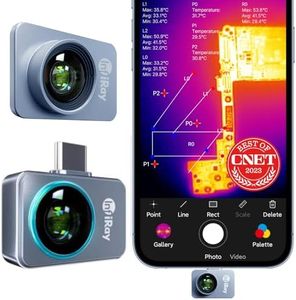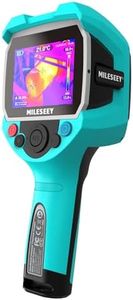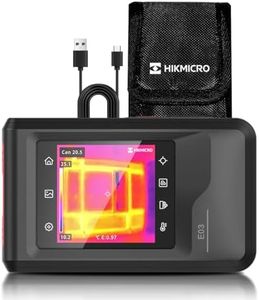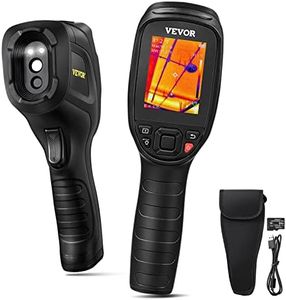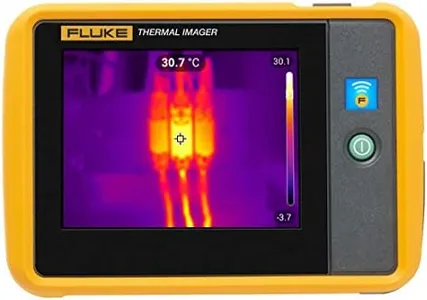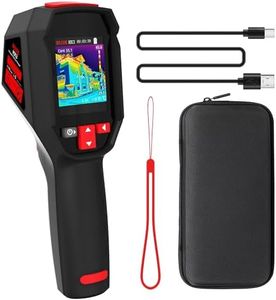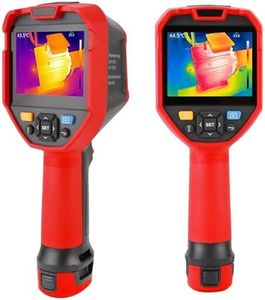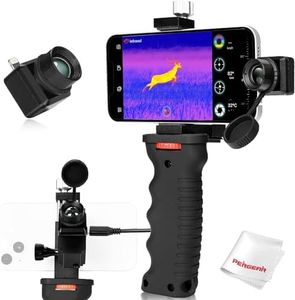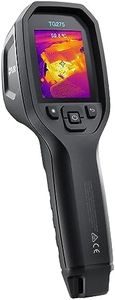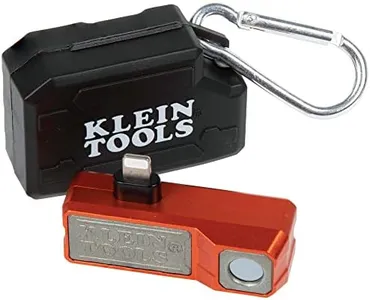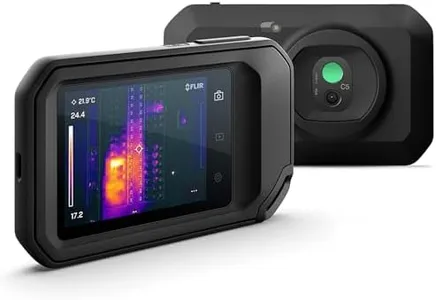We Use CookiesWe use cookies to enhance the security, performance,
functionality and for analytical and promotional activities. By continuing to browse this site you
are agreeing to our privacy policy
10 Best Thermal Imagers
From leading brands and best sellers available on the web.By clicking on a link to a third party's website, log data is shared with that third party.
Buying Guide for the Best Thermal Imagers
Thermal imagers help you see temperature differences in a scene, making them useful for spotting heat leaks in homes, checking electrical equipment, or even outdoor activities like wildlife spotting. Choosing the right thermal imager is about understanding your intended use and the conditions you’ll be working in. Knowing the main features will help you find a device that's easy to use, effective for your needs, and gives reliable results.ResolutionResolution refers to how many pixels the sensor uses to create a thermal image. It's important because higher resolution gives you clearer, more detailed images, making it easier to spot small or distant temperature differences. Lower resolutions (like 80x60) are fine for quick checks or simple tasks. Mid-range resolutions (around 160x120) suit general building inspections and maintenance. High resolutions (320x240 and above) are best for professional or technical work where fine detail matters. For basic home use, a lower resolution is often enough, while for technical or professional use, invest in higher resolution.
Thermal Sensitivity (NETD)Thermal sensitivity, often shown as NETD (Noise Equivalent Temperature Difference), tells how small a temperature difference the imager can detect. The lower the NETD value (measured in millikelvin, mK), the better—it means the device can pick out even slight temperature variations. Typical values range from 30mK (very sensitive) to 100mK (less sensitive). For spotting subtle problems—like water leaks behind walls or precise equipment diagnostics—a lower NETD is important. For general or outdoor uses, higher NETD may be acceptable.
Field of View (FOV)Field of view describes how wide an area the imager can 'see' at once, usually given in degrees. A wider FOV is great for scanning large areas quickly, like building inspections or outdoor search. A narrower FOV allows you to focus on distant or small targets in more detail, which is handy for electrical or mechanical inspections. If you mostly work in small spaces, a narrower FOV is fine, but for big, open areas, go for a wider FOV.
Focus TypeSome thermal imagers have fixed focus, while others offer manual or automatic focus. Fixed focus devices are simple and quick to use for general inspections at standard distances, but may give less sharp images when looking at things very close or very far away. Manual focus and auto focus models let you fine-tune for different distances, which is useful in technical or professional settings where clarity is crucial. Choose based on whether you need speed and simplicity (fixed focus) or flexibility and detail (adjustable focus).
Temperature RangeThe temperature range indicates the lowest and highest temperatures the imager can accurately measure. Wider ranges are important if you plan to inspect very hot (like industrial equipment) or very cold (like freezer systems) objects. For home energy checks, a narrow range is usually enough. Always check that the range matches the temperatures you expect to encounter in your tasks.
DisplayThe display is where you view the thermal image. A larger, higher-resolution screen makes it easier to spot details, especially in bright environments. Some displays are touchscreens, which add convenience but can be harder to use with gloves. Think about your working conditions—in rough environments, simpler, sturdy screens may be better, while larger, sharper screens are great for office or indoor use.
Image Storage and ConnectivityImage storage means how and where your thermal images are saved—on device memory, SD cards, or via wireless transfer to smartphones or computers. Some imagers let you instantly share images or reports. For quick documentation and analysis, easy connectivity and ample storage are helpful. If you need to create reports, pick a model that makes transferring images simple.
